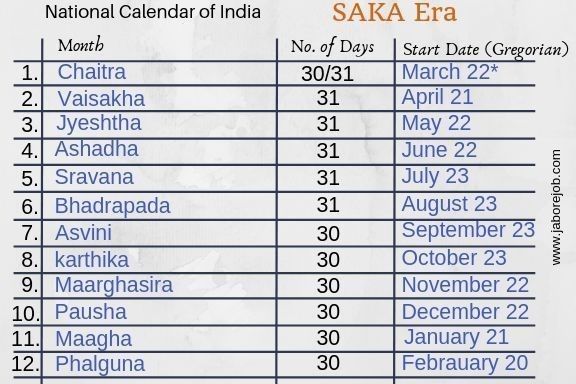For smooth Ad free experience
For smooth Ad free experience
In 1957, the Indian government adopted the Saka Samvat as the national calendar of the country. According to this calendar, the Indian new year is supposed to begin in the month of Chaitra (Gregorian, March-April). It sounds quite unfamiliar, doesn’t it? After all, Indians have always celebrated their new year on January 1st with such pomp and grandeur. Welcome to yet another episode on how India continues to live in the shadow of the West, yet another instance to show how Indians have always neglected their rich cultural history and traded it for a foreign one.

New Year's Eve
Roughly some time in 78 CE, a ruler, whose name remains unverified from the historians’ point of view, declared the beginning of the Saka era. Interestingly, this date was earlier identified with the rise of the great Kushana ruler, Kanishka. The fact that the Kushanas were contemporaneous to the Indo-Scythian rulers of the same name (Sakas) also gave some relevance to this association. Hence, the Saka era was associated with Kanishka for a long time. But in light of the recent findings by Henry Falk, the link between the Saka era and Kanishka was severed. It is now widely accepted that the Saka era was initiated by King Shalivahana of the Satavahana dynasty that was prominent in the Deccan region. King Shalivahana is also the proposed name for the 23rd Satavahana ruler, Sri Gautami Putra Satkarni, who was famously known as the ‘destroyer of the Sakas’. Perhaps, the ‘Saka Era’ was a symbolic reference to the end of the Saka rule in India at the hands of the Satavahana ruler. While the mystery behind the original founder remains unresolved, the accuracy of the dating structure of the Saka era has been widely accepted by scholars.
The calendar followed according to the Saka Era came to be known as the Saka calendar or Saka Samvat. (For those unversed, Samvat refers to the era of Hindu chronology used in the past)
The Saka calendar shows remarkable precision and several similarities with the widely accepted Gregorian calendar. The calendar follows a lunisolar time format, having a total of 12 months and 365 days. The Saka year begins in the month of Chaitra, which in the Gregorian calendar falls between March 21st and April 20th. Since the Saka year began in 78 CE, the actual year in terms of Christian dating is calculated by subtracting 78 from the current Gregorian year. For instance, 2022 AD in the Saka era is 1944.
Due to its similarities with the Gregorian calendar, followed all over the world, the Government of India in 1957 adopted the Saka Samvat as the national calendar. The idea was to preserve the intellectual achievements and the history of our past rulers.
According to Pt. Nehru, the adoption of the Saka calendar could eliminate conflict based on religious differences and unite the country by providing a common cultural past to its masses. The very existence of this calendar, he felt, would be crucial in wiping away the centuries-old influence of foreign rule in India.
It was an ambitious plan indeed and a rational one, too, considering the nation was still trying to shake off the British elements from their people’s minds. Hence, the Saka calendar and time began to be used for all official purposes. But it only went as far ahead as this.
There are very few people who follow the Saka calendar and even fewer who are actually aware of a national calendar. It is important to note that several regions in India do celebrate different spring festivals around the same time as the Saka New year in the month of Chaitra. However, most people and particularly the younger generations, are not aware of the connection of these festivals of the national new year. Moreover, these festivals only have a regional significance, so the kind of unified celebration and nationwide recognition that Nehru envisaged was never witnessed. Imagine all the people in the country performing a countdown to the new year on December 31st. Now imagine all the people from different parts of the country doing the same on March 21st. That’s not likely to happen anytime soon because we are still living in the shadow of the West.
We glorify a foreign culture and are ashamed to learn our own.
The existence of the Saka calendar proves that Indians were as creative and advanced as the westerners. It shows that the ancient rulers of our country were visionaries and gave us a history we can be proud of. The Saka calendar is quite popular outside India. Many Hindu communities living in Java, Bali and Indonesia celebrate the Saka new year with equal enthusiasm. The Nepal Samvat is also partly influenced by the Indian Saka calendar. While it is important to maintain our pace with the world, we must also learn to peek into our past traditions to relive some glorious moments our ancestors had created for us.
0
You might be interested in reading more from
